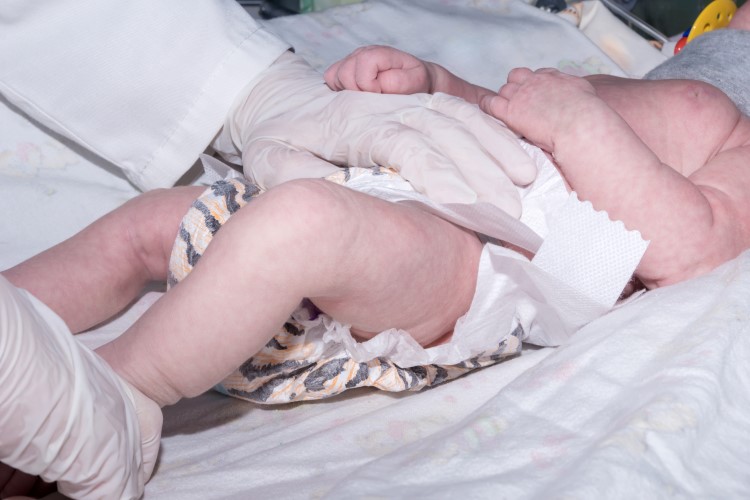“My baby has been injured at birth, what do I do?”
…is unfortunately one of the most common questions that medical malpractice lawyers get asked. There are a number of options that you have to help your baby live the best life possible depending on the seriousness of the injury.
Not all birth injuries are serious or permanent but in this article, we will explore the most common birth injuries and what to do if your baby has been affected

Head injury is the most common birth-related injury. Head molding is not an injury. Molding refers to the normal change in shape of the baby’s head that results from pressure on the head during delivery. In most births, the head is the first part to enter the birth canal. Unfortunately, unlike head molding, some head injuries in babies can lead to brain injuries or lifelong debilitating conditions.
Both brain injuries and injuries relating to birth can mean you are potentially eligible for compensation and it may be beneficial to speak to a lawyer who specializes in medical malpractice cases.
Cerebral Palsy
Out of every 1,000 children born, 2-3 may have cerebral palsy, characterized by lack of motor skill development, weak muscles, and muscle spasms. In many cases, cerebral palsy is the result of damage to the brain that occurred as part of a birth injury. Compensation is available for such birth injuries and should be discussed with a specialized birth injury lawyer. Improper monitoring of the laboring mother, inadequate birth techniques, and failure to monitor fetal distress during labor all cause extreme hypoxic episodes, which can lead to cerebral palsy. While surgery may help the child, there is no cure and cerebral palsy often requires a lifetime of therapy. Cerebral palsy can lead to additional health issues such as vision and hearing impairments, learning disabilities, and speech problems.
Facial Paralysis
If an infant’s face has too much pressure placed on it during the delivery period, damaged facial nerves can result. Facial paralysis is more common when forceps or vacuum extraction is used to pull the baby out. The baby may have no ability to move the affected side of the face at all, including closing the eye. Facial paralysis in children can sometimes resolve on its own without intervention.
Oxygen Deprivation [including Hypoxic Ischemic Encephalopathy]
Oxygen deprivation during delivery can lead to brain injuries. In turn, these brain injuries can cause cerebral palsy or chronic seizures and epilepsy. When the doctor fails to properly monitor the infant during and after birth, or allows the baby to remain in the birth canal too long, brain injuries may result. Physical problems, as well as intellectual disabilities, can be the lasting consequences of even mild oxygen deprivation. If you suspect that your baby may have a brain injury, it is advisable to seek medical attention early and once confirmed, contact a lawyer who has experience in brain injury cases.
Brachial Plexus
These injuries involve damage to the nerves that go from the upper spine to the neck, shoulder, arm, and hand. This damage can be temporary or can result in a permanent disability. The mildest form of such an injury involves the stretching of the nerve, while more severe cases involve torn or ruptured nerves which fail to heal correctly. In extremely severe cases, complete paralysis results when the nerve roots are totally dislodged from the spine.
Fractures
Bone fractures can occur during a complicated delivery, particularly a fractured collarbone. While such fractures generally heal on their own, the baby may need to be immobilized to treat the fracture.
Perinatal Asphyxia
This may occur when the baby receives insufficient oxygen. This can happen when an oxygen deficiency in the blood exists, or when there is insufficient blood flow to the baby before it is born or immediately after it is born. A baby with a pale complexion or labored breathing or one which experiences seizures, shock, or even coma, could be suffering from perinatal asphyxia. Often oxygen administered straight after birth can relieve symptoms, but ventilation may be required.
Hemorrhages
When bleeding occurs in a baby’s skull, under the two innermost layers of the brain covering, the baby may be suffering from subarachnoid hemorrhage or intracranial hemorrhage. A subconjunctival hemorrhage can occur when a blood vessel in the eye bursts, and is the result of pressure variations during the birth.
Spinal Cord Injuries
Spinal Cord Injuries are among the most serious of birth injuries and may be due to the overly forceful use of forceps that cause nerve or cord damage. Paralysis and neurological problems often result.

Are birth injuries permanent?
Birth injuries may be temporary with symptoms that resolve in a few days to a few weeks. However, they may also be permanent with severe symptoms that last for the child’s entire life.
If you believe your child has suffered a birth injury and may be due compensation, please reach out to the experienced medical malpractice lawyers at Stalwart Law for a consultation about your individual situation.
